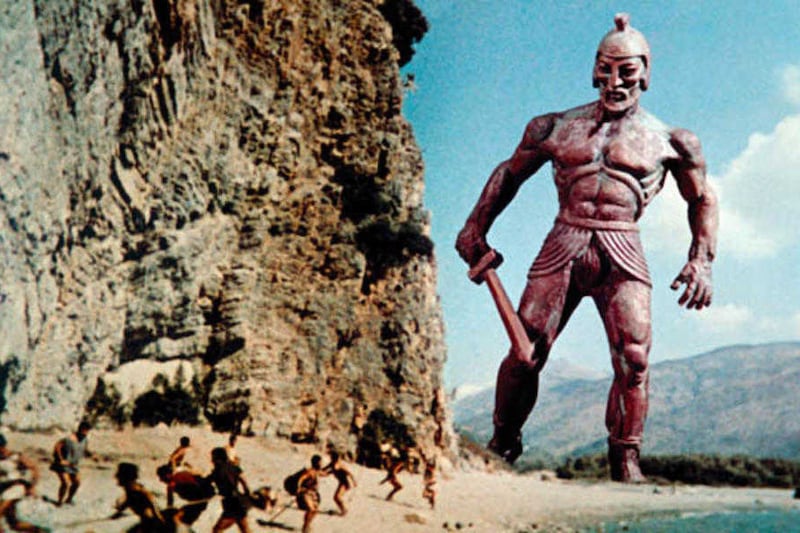JASON And The Argonauts is many things. It’s a rollicking good adventure story, for a start. Made in 1963 and based – loosely, it must be said – on the Greek poem Argonautica, it’s a quality sandals-and-swords epic, albeit it one made for the kind of budget that would barely cover the footwear costs on a modern day 'epic'.
It’s also one of the most unforgettable fantasy films and mystical monster movies a pre-teen viewer could ever hope to stumble across on a wet Saturday afternoon TV schedule.
That’s how I first encountered director Don Chaffey’s charmingly clunky Greek God Odyssey at any rate, and here’s hoping new generations will continue to discover it’s simple but effective delights for decades to come.
Put simply, Jason And The Argonauts is one of those magical viewing experiences that every cult-curious child should experience at least once.
The main reason it occupies a special place in my heart, and the hearts of millions of similarly ensnared believers, is simple.
It’s all about those mythical monsters brought to life in dazzling stop-motion animation by the king of that particular painstaking craft, the late great Ray Harryhausen.
Once seen they are never forgotten. His beautifully crafted models, animated frame by frame with miniscule movements of limbs between shots, had graced many a B-movie epic prior to this but it’s here that the man truly hit Hollywood heaven.
Despite the complex Greek mythology at the story's core and the convoluted plot that sees a man called Jason attempt to reclaim his father’s throne from the man who killed him by bringing together a gang of heroes to grab the fabled Golden Fleece and thereby restore unity to his people, this is a monster movie plain and simple.
There’s the vast, bronze figure of Telos who looms ominously over the mere mortals like a huge statue jerking terrifyingly to life.
If that’s not scary enough, how about the Harpies who flap their stone wings endlessly as they harass the character of Philneas (played by future Dr Who Patrick Troughton)?
These are startling images for the era and Harryhausen delivers the beasts in screen-filling, heart-stopping manner throughout.
Those raised on modern CGI may scoff at the home-grown nature of these effects but the groundbreaking achievements on show here cannot be over estimated.
His finest moment, and the film’s most iconic sequence, comes courtesy of the skeleton warriors who rise ominously from the Earth, bones jangling and blades flailing.
Considered by the censors of the time to be so nerve-shreddingly terrifying that sections of their screen time wound up on the cutting room floor, this audacious army of bone machines are one of the most unforgettable creations ever to grace a fantasy film.
Add to that pleasingly unshowy direction from Chaffey (who’s CV jumped from One Million Years BC to episodes of The Prisoner), a relatively unstarry cast led by Todd Armstrong and boasting a host of gravitas-adding British character actors and a score from the great Bernard Hermann and it’s easy to see why the film has stood the test of time.





